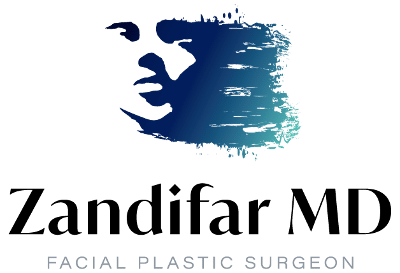Facial surgery can be a life-changing experience, offering individuals an opportunity to redefine their features and boost their self-confidence. However, along with the benefits of transformative facial procedures comes the inevitable aftermath of scars. The quest for perfection often involves minimizing the visibility of scars, and this is where scar revision techniques play a pivotal role. In this comprehensive exploration, we will delve into the world of scar revision, unveiling the techniques that plastic surgeons employ to enhance the outcomes of facial surgery and leave patients with not only rejuvenated features but also minimal, inconspicuous scars.
The Nature of Facial Scars
Understanding the nature of facial scars is crucial for appreciating the significance of scar revision. Scarring is a natural part of the body’s healing process. When the skin undergoes trauma due to surgery or injury, the body responds by producing collagen fibers to repair the damaged tissue. The appearance of a scar depends on various factors, including the type of surgery, individual healing processes, and the surgical techniques employed.
Types of Facial Scars
- Hypertrophic Scars: These are raised and red scars that remain within the boundaries of the original wound.
- Keloid Scars: Elevated scars that often extend beyond the initial injury site.
- Atrophic Scars: Indentations or depressions in the skin.
- Linear Scars: Typically resulting from surgical incisions, these scars can vary in visibility.
The Art and Science of Scar Revision
Scar revision is a specialized field within plastic surgery that focuses on minimizing the appearance of scars and improving their overall aesthetic. In facial surgery, where the face is prominently visible, effective scar revision techniques become paramount. Plastic surgeons employ a combination of artistic finesse and scientific precision to optimize scar outcomes for their patients.
- Early Intervention for Optimal Results
A critical aspect of scar revision is early intervention. While some scars naturally fade and mature over time, early intervention allows for a proactive approach. Surgeons often utilize techniques such as silicone sheeting or topical treatments to manage scar development in the initial stages of healing. This early attention helps guide the scar towards a more favorable outcome.
- Laser Therapy for Scar Resurfacing
Laser therapy has emerged as a revolutionary tool in scar revision. By using laser energy to precisely target scar tissue, plastic surgeons can stimulate collagen production and promote more even skin texture. Laser therapy is particularly effective for addressing hypertrophic and keloid scars, helping to reduce their visibility and improve skin tone. The precision of lasers allows for controlled resurfacing, contributing to a smoother appearance.
- Injectable Treatments for Atrophic Scars
For atrophic scars that result in depressions or uneven skin texture, injectable treatments can be transformative. Dermal fillers, often based on hyaluronic acid, can be strategically placed to lift and plump depressed areas, creating a smoother and more uniform appearance. This technique is especially beneficial for addressing scars left by certain facial surgeries, adding volume and restoring contours.
- Surgical Scar Revision for Precise Correction
In cases where the scar requires more significant correction, surgical scar revision may be recommended. This technique involves removing the existing scar and carefully closing the incision to minimize tension and optimize healing. Surgeons employ a meticulous approach to ensure that the new incision aligns with natural skin lines, reducing the visibility of the scar. Surgical scar revision is particularly effective for linear scars resulting from facial surgeries.
- Microneedling for Scar Improvement
Microneedling, also known as collagen induction therapy, involves creating micro-injuries in the skin to stimulate collagen production. This technique can be particularly effective for improving the texture and appearance of scars. Surgeons often combine microneedling with platelet-rich plasma (PRP) therapy to enhance the regenerative effects. The controlled micro-injuries stimulate the body’s natural healing processes, contributing to a more even skin surface.
Patient-Centric Approach: Tailoring Scar Revision to Individual Needs
One of the distinguishing features of scar revision is its patient-centric approach. Scar revision is not a one-size-fits-all endeavor; instead, it is tailored to the individual needs and characteristics of each patient. Recognizing that every patient’s skin type, healing process, and aesthetic goals are unique, surgeons conduct thorough consultations to determine the most appropriate scar revision techniques for optimal outcomes.
- Comprehensive Preoperative Planning
Before any facial surgery, surgeons engage in comprehensive preoperative planning. This involves assessing the patient’s skin type, previous scarring tendencies, and any factors that might influence the healing process. By understanding these nuances, they can develop a personalized surgical plan that includes scar revision strategies from the outset.
- Education and Communication
Patient education is a crucial aspect of scar revision. Surgeons ensure that their patients are well-informed about the expected outcome of their surgery and the potential appearance of scars. Open communication allows patients to actively participate in the decision-making process and manage their expectations realistically.
- Postoperative Care and Follow-Up
The journey doesn’t end in the operating room. Surgeons provide comprehensive postoperative care instructions to optimize healing and scar outcomes. Follow-up appointments allow them to monitor the progress of the scars and make any necessary adjustments or additional interventions to further enhance results.
Realizing the Artistry in Scar Revision
Scar revision is not merely a technical procedure; it is an art that requires an understanding of aesthetics, human anatomy, and the unique characteristics of each patient. The commitment to the artistry of scar revision goes beyond minimizing the visibility of scars; it involves creating results that seamlessly blend with the surrounding facial features.
Your Path to Optimized Scar Outcomes Begins Here
If you are considering facial surgery and want to ensure optimal scar outcomes, consult with Dr. Zandifar.. Scar revision, when approached with artistry and precision, can enhance the transformative experience of facial surgery. Embrace the possibilities of scar revision and discover the beauty of results that harmonize with your unique features.
Contact https://zandifarmd.com today.


